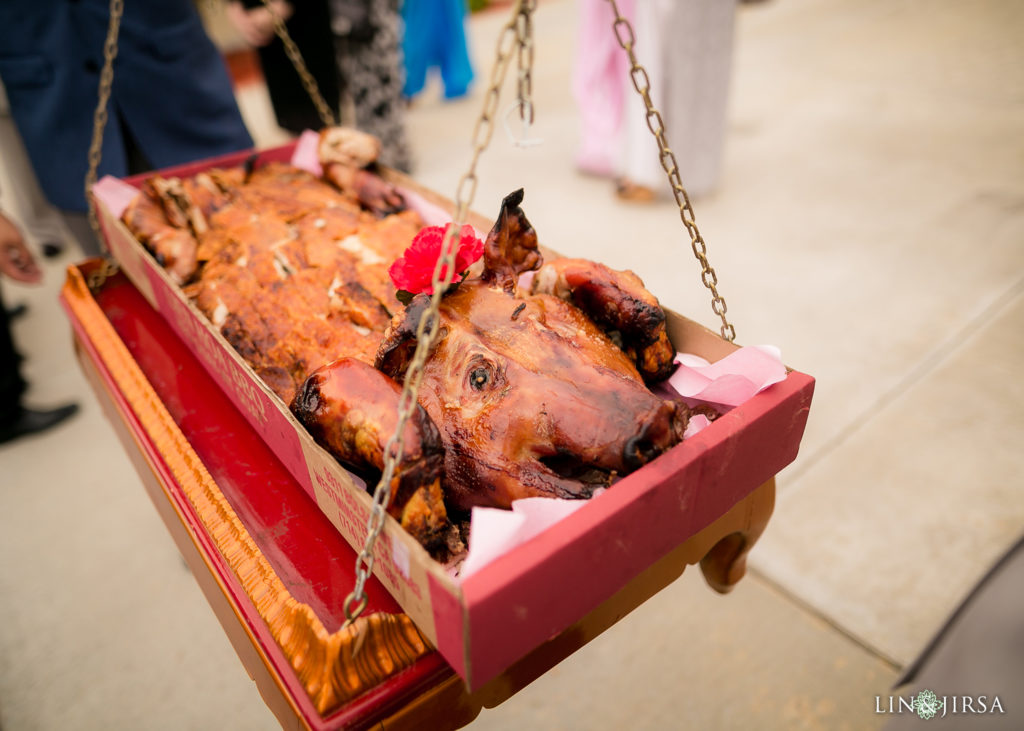
Vietnamese Wedding Traditions | Your Guide to Customs and Rituals
Asian weddings in the United States represent a magnificent culmination of historic and contemporary traditions. Each element, from traditional wedding dresses to extensive tea ceremonies, showcases the beauty and richness present in Asian culture.
This guide will focus specifically on Vietnamese wedding traditions.
For those interested in Asian cultures not included in this guide, we’ve also created Chinese and Korean wedding tradition guides. Please keep an eye out for our future cultural wedding photography guides. While each of these Asian cultures incorporate many wedding traditions from Western culture, especially during weddings performed in the U.S., the unique traditions they preserve truly distinguish them from one another and allow them to introduce their heritage into U.S. culture. From the playful antics of Chinese door games to the structured pyebaek ceremony observed during Korean wedding receptions, each tradition further enriches the wedding day.
In this post, you will learn about several Vietnamese wedding traditions, like those mentioned above.
PLEASE NOTE: The information shared in this guide has been culled from our own experiences photographing Vietnamese weddings and does not proclaim to be a definitive guide that includes every possible Vietnamese wedding tradition. We recognize there may and likely will be traditions, however frequently or infrequently observed, that are not represented within this guide.
Vietnamese Wedding Timeline
While photographers do not usually create wedding timelines (a job handled more often by wedding planners & coordinators), they should familiarize themselves with the timeline so that they can anticipate the major events that are scheduled to occur throughout the day and plan accordingly.
PLEASE NOTE: The timeline presented below is intended to serve only as an example of what a timeline might look like for a Vietnamese wedding. Actual timelines for all weddings will vary.
09:00 am – Bridal party hair and makeup begins
10:00 am – Photographer arrives | Prep & details
Individual portraits of bride & groom
10:45 am – Tea ceremony at bride’s home
11:30 am – Lunch
12:30 am – Tea ceremony at groom’s home
01:30 pm – Couple’s daytime session
02:15 pm – Bridal party portraits
02:30 pm – Photos of wedding ceremony details
03:00 pm – Processional & ceremony
03:45 pm – Recessional
04:00 pm – Family formals
04:45 pm – Couples session
04:45 pm – Cocktail hour
05:00 pm – Reception details
05:45 pm – Doors open to reception
06:00 pm – Grand entrance
06:10 pm – First dance
06:20 pm – Dinner, speeches
06:35 pm – Table visits
07:00 pm – Open dance floor
07:35 pm – Sneak away couples session
08:00 pm – Cake cutting ceremony/dessert
08:15 pm – Dancing continues until conclusion
**Although not included in the timelines above, each of these weddings may or may not feature a grand exit.
Vietnamese Wedding Glossary
Here is a quick reference list of terms you should know before photographing a Vietnamese wedding:
Ao Dai
Ao dai is a traditional Vietnamese wedding dress worn by both the bride and groom. Ao dai has a fitted top with floor length panels and a pair of accompanying pants. The ao dai is often paired with a circular headdress called a khan dong.
Dam Hoi
Dam hoi is an engagement ceremony, which includes the procession and gift exchange that precedes the tea ceremony.
Khan Dong
Khan dong is a headdress worn by the bride.
Mam Qua
Mam qua are red tin baskets used for storing gifts for the tea ceremony. The gifts in these baskets, which typically contain a tea set, fruit, or even a roasted pig, are carried in even numbers by the groom’s family and offered to the bride’s family.
Tan Hon
Tan hon translates to “just married,” and this sign can usually be found at the groom’s house.
Tea & Candle Ceremony
The tea & candle ceremonies in Vietnamese weddings honor relatives & ancestors and function as the proper meeting space for families. Brides and grooms also exchange vows and rings during this ceremony.
Tram Nam Hanh Phuc
Tram nam hanh phuc, which translates to “100 years of happiness,” is typically written on a large ceremonial cloth and placed on an altar at the site of the tea ceremony.
Vu Quy
Vu quy translates to “leaving for husband’s house,” and this is usually placed outside of the bride’s home.



